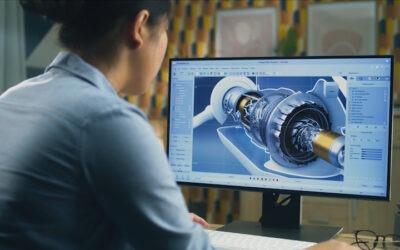Blog
Modernizing Technical Documentation
Evolution of Technical Documentation for the Aerospace Industry
In the ever-evolving landscape of the Defense and Aerospace industry, the way technical data is exchanged and documented has undergone a transformative shift. This transition involves transforming conventional Illustrated Parts Data (IPD) manuals to the standardized approach offered by S2000M.
Understanding IPD Manuals
The Illustrated Parts Data (IPD) earlier known as Illustrated Parts Catalogue (IPC) is a special document published by aircraft manufacturers. It contains detailed information, pictures, and part numbers for all parts in the aircraft. It is used alongside the Aircraft Maintenance Manual (AMM).
The AMM serves as the primary resource for disassembling and reassembling aircraft components, while IPC helps identify parts and show how they fit together. The IPC is like a helpful addition to the AMM, but it is not officially on its own. It is used as a support reference when there are differences with the AMM. The IPC covers all spares or identification parts data necessary for the maintenance or repair of a component. Figures consisting of illustrations and detailed parts lists are presented in system, subsystem, and unit sequence. Itemized data within a part’s list is presented in a logical disassembly sequence; and generally shown through an isometric illustration with exploded views as necessary to show detailed parts.
Manufacturers provide IPD information digitally through an Electronic Parts Catalogue (EPC). It can be computer software or a website that can be accessed online. With the help of EPC, the aircraft can be virtually divided into parts to find the part needed.
Challenges in Traditional IPD Manuals
Traditional IPD manuals often varied in structure, format, and content from one supplier to another. This inconsistency made it challenging for operators and maintenance personnel to access and use the information effectively. Additionally, manual data exchange process made it time-consuming, prone to errors, undermining operational efficiency.
Introducing S2000M Standard: A unified approach
The replacement of traditional Integrated Product Data (IPD) manuals with the S2000M standard refers to the adoption of a more modern and standardized approach to data exchange and documentation in the defense and aerospace industries. S2000M is a specification developed by the Aerospace and Defense Industries Association of Europe (ASD) that aims to streamline and improve the exchange of technical and maintenance data between suppliers and customers.
What is S2000M Standard?
S2000M is a standardized specification that defines the structure, format, and content of product data in a consistent manner. It covers various types of data, such as technical information, maintenance data, parts data, and configuration management data. It seeks to establish a consistent structure, format, and content for product data, streamlining its exchange and utilization.
Benefits of Adopting the S2000M Standard
The adoption of S2000M offers several benefits, including:
1. Improved Data Consistency: S2000M ensures that data across different products and suppliers follows a common structure and format. This uniformity makes it easier for users to find and understand the information they need.
2. Enhanced Data Exchange: S2000M provides guidelines for electronic data exchange, which facilitates faster and more accurate communication between stakeholders.
3. Reduced Maintenance Costs: Standardized data enables more efficient maintenance procedures, reducing downtime and associated costs.
4. Simplified Training: Uniformity in data presentation makes it easier for maintenance personnel and operators to be trained on various products.
5. Better Interoperability: S2000M facilitates integration with Computerized Maintenance Management Systems (CMMS) and other information management systems.
Managing the Implementation Challenges with S2000M
The transition from traditional IPD manuals to S2000M may require initial investment and effort to update existing data and systems to comply with the new standard. This transition entails training personnel in the new approach and providing them with tools for data management and exchange.
Adoption of S2000M in the Defense & Aerospace Industry
The adoption of the S2000M standard is not mandatory but rather depends on the preferences and requirements of defense and aerospace organizations. Some organizations may choose to transition fully to S2000M, while others may use it alongside existing formats.
Conclusion: Embracing the era of efficiency
Overall, the transition from traditional IPD manuals to the S2000M standard represents a step towards greater standardization, efficiency, and effectiveness in the exchange and utilization of technical and maintenance data within the defense and aerospace sectors. Adopting the S2000M standard reflects the industry’s commitment to staying updated with evolving practices, operational excellence, and bolstering innovation.
Related Articles
Demystifying S1000D-international specification for the production of technical publications
Demystifying S1000D – international specification for the production of technical publications. Learn how this technical publications standard streamlines technical documentation for aerospace, and automotive industries.
Ensuring Quality Excellence
Discover how Cades Studec ensures quality excellence in technical documentation and engineering services, driving precision, reliability, and client satisfaction.


